#4 Rebuilding Religion
Organised religion is on the decline in Europe, leaving lots of churches abandoned, waiting for a new role to fulfil. But the mix of religions is increasingly diverse, and we haven’t lost our need for spirituality and community. Rather than seeing different faiths as opposing world views, maybe we should look for what makes them similar, and bring people together.
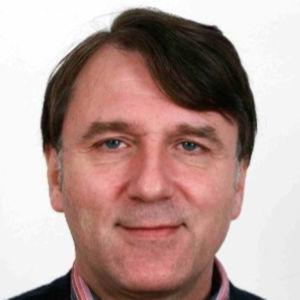
Ton Harmes
Back in 2006, the bookshop Dominicanen opened in the very first Gothic church in the low countries. You see, it hadn’t been used as a church for over 200 years. It is now a beautiful store (see the pictures below), and it’s run by Ton Harmes, who tells the story of this particular church, and how society is dealing with an increasing number of empty churches.
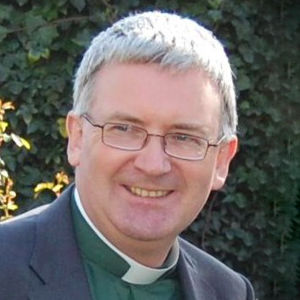
Terry Biddington
At the University of Winchester, Reverend Doctor Terry Biddington holds the unique title of Dean of Spiritual Life. As he explains in this episode, the world is now a smaller place, and people of different faiths are figuring out how to live together. Part of his research is on multifaith spaces, those rooms in airports, schools, etc. where all religions are welcome. Open your mind and listen to his vision…
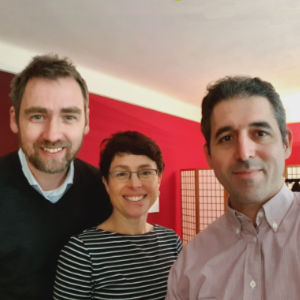
Frithjof Timm, Esther Hirsch & Osman Örs
Finally, we hear from the House of One in Berlin – well, from the team working on it, because the building is still very much under construction. It’s a prime example of an interfaith project, combining a church, mosque and synagogue. Discover the challenges and opportunities of establishing a concept that will build bridges and cross boundaries.
Additional notes & links
- There are plenty of wonderful examples of repurposed churches, like this list of church-houses, these ones from Gizmodo, and of course, some hot and trendy “champing” spots.
- Some shots we took when we visited the wonderful Bookshop Dominicanen:
- Next to the House of One in Berlin, check out some other interfaith projects like the Guds Hus near Stockholm, the House of Religions in Bern, or the Multi-Faith Centre at the University of Derby.
- As mentioned in the episode, you may think you’ve seen some pretty churches, but these amazing photographs of church interiors by Thibaud Poirier blew us away!
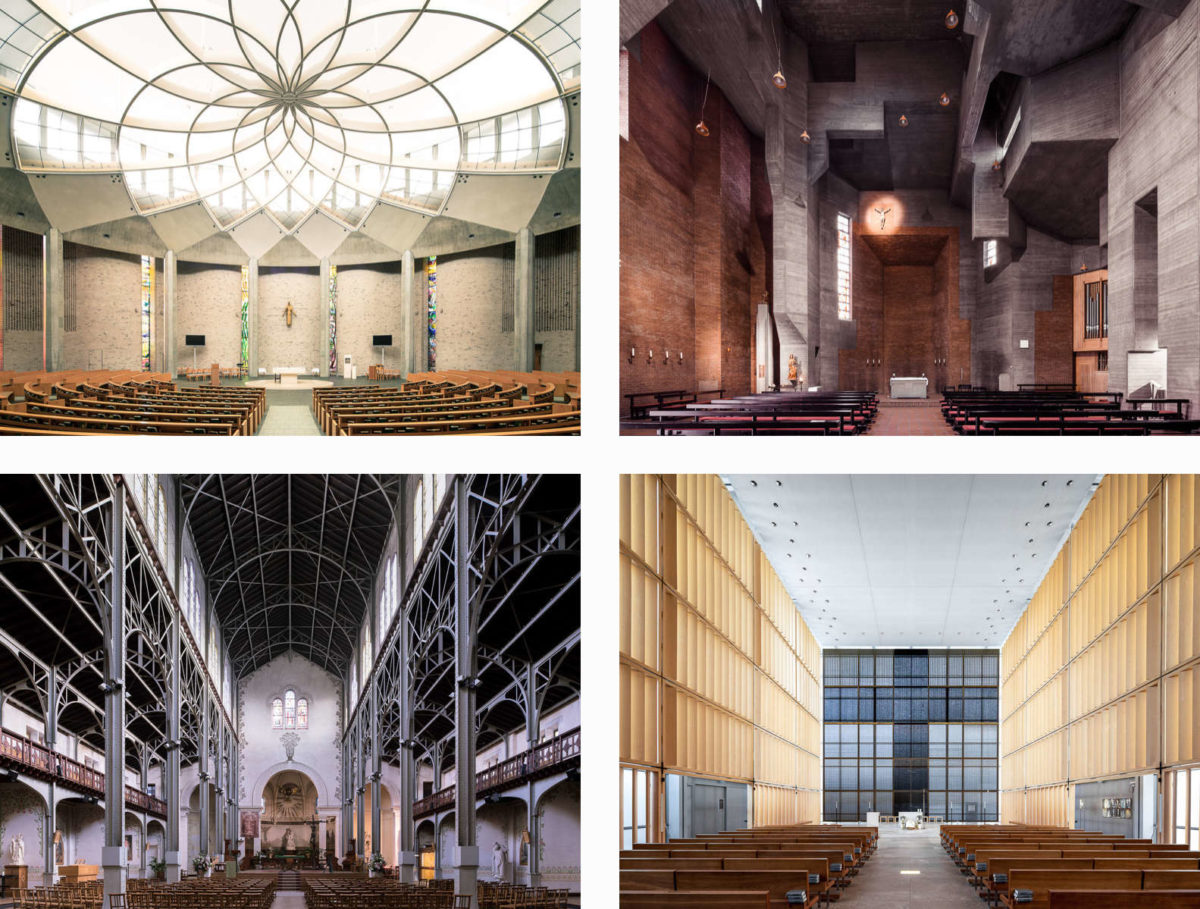
Credits
🎵 All music by Lennart Schoors, except:
Lee Rosevere – All The Answers
Lee Rosevere – Old Regrets
Lee Rosevere – Thought Bubbles
Plus sounds by Timbre, mmiron and NewEonOrchestra
Transcript
Boekhandel Dominicanen
Lennart Schoors: Today, I’m in Maastricht, a city in the south of the Netherlands, close to Germany, and the Belgian border. And I’m standing in front of a bookstore, but I have to say, it’s not just any bookstore.
Ton Harmes: When you came in, 3 things happened: you silence your voice when you are speaking, you look up, and you only want to go to the altar section. Just a small secret, but to us as retailers, it’s always very important to get your customer as far in the shop as possible. Well, the Dominicans, did that for us.
Mei Van Walleghem: Hang on a minute, I hear him talking about the Dominicans? He also mentioned the altar section? Were you really in a bookstore, because I’m getting confused.
Lennart: Well, that’s because this bookstore is located in a church – and a beautiful church as well. I spoke to the man who runs it.
Ton: Well, my name is Ton Harmes, director of bookshop Dominicanen. And we are in Maastricht, in a more than 700 years old Gothic church, the first Gothic church of the low countries.
Lennart: Today, we’re going to talk about how we’re dealing with some of the most significant spaces in our history – religious buildings – and how we’re giving old ones a new future, and building new ones for the future.
This is Tomorrow People, a show about building a better tomorrow, today. I’m Lennart, and I am Mei
Repurposing churches
Lennart: Okay Mei, do you ever visit a church?
Mei: Uh, when I’m visiting a city I might go and take a look yeah. See the interiors.
Lennart: Sure, but like a regular service?
Mei: A regular service? Never. Nothing other than a marriage or a funeral.
Lennart: Yeah, same with me. And studies show that we’re no exceptions. Organised religion is on the decline in Europe, leaving lots of churches abandoned, waiting for a new role to fulfil. Just looking at our own hometown, you’ll find some of many ways churches are being repurposed. There’s a cohousing, office spaces, a food market, …
Mei: Yeah, even a circus school! And have you ever heard of the term champing?
Lennart: I don’t think so…
Mei: It’s short for church camping. It’s just some silly term marketeers have invented, but I actually looked into it, and if you go searching on Airbnb for example, you’ll find plenty of converted churches where you can spend the night. But I’m digressing … tell me more about this bookstore of yours.
Lennart: Well, the Dominican church in Maastricht has a long history. It was built in the 13th century, but it hasn’t been used a church for ages.
Ton: The city of Maastricht, who owns the building already more than 200 years, never knew what to do with the building. It was officially bicycle more than 200 years ago. So we had lots of functions here that had nothing to with any religious function or whatsoever.
Lennart: It has been used as a municipal archive, an exposition gallery, a rehearsal room for the local orchestra, even a horse stable. In 2001, it was time for a do-over.
Ton: It was in a terrible state. It was used as a bicycle shed.
Lennart: So they started renovating. But since it’s a classified building they couldn’t just do whatever they wanted.
Ton: We are retailers, and so we think horizontally in floors. By doing that, we would have made the Gothic aspect invisible. And the importance of the Gothic period and this monument is the fact that you can see the light and space. In the Gothic period, it’s about light and space and height.
Lennart: And so the architects came up with the idea of a three-level monolithic block, standing freely in between the church pillars. It’s constructed in black steel, a stark contrast with the pale marl stone of the church.
Ton: It only enhances the enormity of the building. It makes it longer and bigger, and on one hand is a strange object, but it is not fighting with the building.
Lennart: The bookstore opened in 2006 and the result is truly wonderful. We took some pictures, they will be up on our website and Instagram. British newspaper The Guardian called it “probably the most beautiful bookstore in the world”. That helped a lot of course, and now it attracts close to a million visitors a year.
Ton: Well, as bookshops we come from a very difficult period. It’s now going better. Important is that, those people who come are of course many tourists, who come to look for the concept – the bookshop in the church. So, we must have something for them as well. A tourist from China, they don’t read Dutch, so we must vary.
Lennart: Next to an extensive selection of books, they also sell cd’s, gifts and souvenirs, and in the back of the church, right where the altar used to be, there is now a small café.
Ton: To many people, we are a third place.
Lennart: A third place is the social surroundings separate from the two usual social environments: home – the first place – and where you work – the second place.
Ton: And I consider it a very big compliment when somebody tells me – a customer tells me “Well Ton, I was in your shop last week, not to buy anything, but I just wanted to be there”. Well, a greater compliment, I think, a customer cannot give you.
Lennart: After years in disarray, this church has fulfilled its role again as a place to bring people together.
Ton: You know, the problem is, in Europe, everywhere we have this enormous quantity of churches, chapels and religious buildings. And nobody knows what to do with it. By doing this, and by getting more or less a million people per year, everybody can come and see the cultural heritage of this city, and of the Netherlands. And part of that cultural heritage is Christianity. You can be for or against it, but nevertheless, that’s the way it is.
SOS Sint-Anna
Lennart: So this bookstore is a fine example of marrying the new purpose of the a church, while maintaining its cultural significance. But it doesn’t always go as smoothly.
Mei: Yeah, isn’t there a church nearby where the city is planning to house a supermarket?
Lennart: Exactly, it’s a monumental church, called Sint-Anna. A small group of people are fighting the idea, lead by a peculiar man. As a form of protest he comes to the church every day around noon. I went there to take a look. So this somewhat scruffy old man arrives on his tricycle. He hangs a few flyers on the door of the church, he sits down on the steps, smokes a cigarette, and then he takes his violin out of his case. This the renowned Russian violinist Mikhail Bezverkhny. Back in 1976 he won the prestigious Queen Elisabeth Competition, and he has settled here in Belgium since the nineties. Even though the church has been closed to the public for years, he cannot live with the idea it would get desacralised, at least not for a commercial project. So he actually plays a solo concert in front of the church, every single day for the whole year.
Mei: Every day?
Lennart: Every day.
Mei: Look, we can repurpose old Catholic churches all we want, but there’s also an influx of other religions in Europe that need places of devotion. We’ll look into this evolution after the break.
Break
Lennart: We’re about halfway in this season of Tomorrow People, currently putting the final touches on a couple more episodes. But behind the scenes we’re already thinking about next season, and that’s where you can pitch in. Do you know about a person or a project we really should feature in this podcast? It can be anybody or anything, as long as it’s relevant in our story of the tomorrow people, and also we’re limiting ourselves to the European continent. So get in touch – you can find all the contact details on our website at tomorrowpeople.today, and we’re also on the usual social media. Oh, and also: if you have a cool product or service you want to promote here, we’ll have some limited ad spots in the future. You can find all the details about that on tomorrowpeople.today/sponsor.
Multifaith spaces
Mei: There’s no way around it, we’re increasingly living in a very diverse society, inhabited by people of all kinds of religions and faiths and cultures. And while yes, a lot of religious buildings are unused and being converted, there’s still a need for spirituality in society. We still need spaces to come together, for a sense of community, for mindfulness and meditation, and also for prayer. We found someone at the University of Winchester, southwest of London, to talk about this evolution, and we gave him a good old fashioned telephone call.
Terry Biddington: Hello, Terry Biddington.
Mei: This is Reverend Doctor Terry Biddington. He holds a pretty unusual title at the university.
Terry: So when I was appointed, I was appointed to the role of Dean of Chapel. But it struck me immediately, with the demographic of the students, that this was to limit the role, and that there was a much more exciting possibility to engage the whole of the student community. So I presented the case for changing my job title, and the vice chancellor agreed.
Mei: Terry is now the first – and so far the only – Dean of Spiritual Life. So, could you say that he’s more progressive than his colleagues?
Terry: Ha, I’m certainly not a stereotypical Anglican priest or theologian. I have a certain impatience with the church, and with its current introspective obsession. And it seems to me that my role requires me, obligates me to try and make connections with people, who don’t have a formal religion, but who are passionately keen in their own spiritual adventure, and in the business of making a difference in the world.
Mei: One of the things he did was to set up a student contemplative community.
Terry: It’s a bunch of students, they are Christian, Buddhist, pagan, atheist, Muslim, spiritual seeker, undefined, … And twice a week we meet together for food and silence, without the baggage of, you know, what do you believe, and you’re different from me, and I’m better than you, and all of that kind of traditional stuff that’s gone on between religions.
Mei: He’s well aware that institutionalised religion can have less favourable outcomes.
Terry: Religion very often can reduce people to the level of the football field, with that kind, you know, “we must win” – that kind of crusader thinking that we’ve seen in the past that’s caused so much trouble.
Mei: Of course theologians do a lot of research at the university, and Terry has always been interested in the relations between religions.
Terry: If you look at places like South Asia, you know Bangladesh, India, Pakistan, … People have always lived together. People of different faiths have always lived together and visited each other’s places of worship – it’s not a big deal. And then moving further West, such places have existed for a very long time in the Balkans, in Israel, Palestine, in North Africa, … People have shared religious space together. But in the West, they’re quite new. As the world has shrunk, as the great empires of the past, colonialism, has collapsed, people have migrated, there have been asylum seekers, there’s global travel, … So people are moving around the world. They’re aware that the world is a smaller space than it was ever perceived to be. And that’s changed the space of the public institutions in the West.
Mei: He focused his work on the specific places where different religions come together mainly for practical reasons.
Terry: So in the 1980’s, the first obviously multifaith space was created in Vienna airport.
Mei: Because of increased diversity, and since we’re spending more and more time out and about and in public buildings, these multifaith spaces have popped up. Rooms and halls open to all faiths to come and do their thing. There are now many thousands of these multifaith spaces, all built in just a few decades.
Terry: They’re in hospitals, they’re in universities, schools, shopping malls, prisons, sports stadia, motorway service stations. They’re absolutely everywhere.
Mei: They’re often marked by a series of icons. There’s a cross for Christianity; the Islamic star and crescent moon; Judaism has their star of David; the “Om” symbol of Hinduism; and then there’s Buddhism, Sikhism, Jainism, Zoroastrianism, Shinto, Pagan symbols… But sometimes the religious aspect is only implied, and they are called something like meditation room, or quiet room.
Mei: A large part of these spaces are what insiders call negative multifaith spaces. In an effort to not offend or provoke anyone, they’re stark, empty rooms stripped of any life or soul. More akin to a bare waiting room or a modern art gallery, rather than an opulent church, mosque, synagogue or temple. The worst offenders are windowless, tucked away in some distant hallway.
Terry: In some places, these spaces have all the aesthetics of a toilet. You go in there and you do what you need to do and you get out quickly.
Mei: But increasingly, things are changing.
Terry: Architects and designers are now rising to the challenge of creating more interesting spaces. Using colours and light, and textures and fabrics, and sound, to create spaces of peace of restfulness and calm. They’re not religious spaces, but they’re spaces that use the designers’ tools to create, kind of numinous, transcendent spaces. Not quite in this world, but something else. A kind of secular aesthetic is being created – very powerfully. Though I would agree, that at the moment the vast number of these spaces are bland, inoffensive, Ikea-type design – and that’s not to insult Ikea.
Mei: Researchers sometimes make the distinction between unity by exclusion – so by removing anything that might offend – versus unity by inclusion – by seeking out what we have in common, what binds us. Reverend Doctor Terry Biddington has coined the term cleaving space in this context.
Terry: In English, the word cleave means two opposite things. Two people can come together in a marriage or in a relationship, they cleave together, they stick together. But cleave is also what you with an axe and a piece of wood – you split it. So I call multifaith spaces cleaving spaces because for some people, as they enter these spaces, they are appalled. Truly appalled at a visceral level. They find people of different faiths in there. So they want to fee, they want to run out in terror. And I’ve seen people’s expressions. But on the other hand, other people of faith want to come together, because they see multifaith spaces as a way of connecting in a secular, sometimes hostile world. So it brings people together, to explore otherness.
Mei: Perhaps paradoxically, the best examples of this unity by inclusion can be found in interfaith projects where every religion still has its own separate space. Sort of like a cohousing project, where you live under the same roof and have shared rooms, but you still have your own space where you can be yourself without restrictions.
Terry: Then you get very different, very interesting complex, subtle spaces where people actually come together and engage with each other. Recognise their religious differences, but not be afraid of it.
Mei: Projects like these work best when they grow from the bottom up.
Terry: When interfaith activity arises from government initiatives, very often they fail because they don’t connect with ordinary people, and the lives of ordinary people. But where the project comes from the grassroots, the strength of the initiative, the desire to connect, the richness that’s created, is much more engaging of people and their different lives. They’re much more successful.
Interfaith: House of One
Lennart: I found a couple of these successful interfaith projects – buildings that combine two or more churches, mosques, synagogues or temples. There’s the Guds Hus near Stockholm – if I’m getting that right –, there’s the House of Religions in Bern, the Esplanade des Religions near Paris, and a few more. And in a couple of years there will be another interesting example in Berlin. The German capital has a famous history of walls and curtains being torn down, and that’s exactly what they’re doing in the House of One. There’s not much to see yet, but the plans are impressive. It’s a single modernistic volume, where they’re housing a church, a synagogue and a mosque. And since there are three main religions associated with the House of One, we had to get them all three in front of the mic.
Frithjof Timm: Maybe we can get a little bit closer to the microphone, like this?
Esther Hirsch: We just only have one microphone, so we’ll have to change…
Lennart: I spoke with Frithjof Timm, Esther Hirsch and Osman Örs. They are the theological advisors for the Christian, Jewish and Muslim religion respectively. The House of One will be constructed on the Petriplatz, right in the centre of the city. And this is no coincidence – it is the place where the oldest church of Berlin once stood, almost 800 years ago. As Osman Örs explains, the church was rebuilt several times, and finally destroyed in World War II.
Osman Örs: So the House of One will be built on top of the fundaments of the old churches. But they won’t get lost, they will be further integrated into the House of One, so we’ll have in the basement a so-called archeological hall, where you can see and even walk on the rests of the old churches of this place.
Lennart: They start with the foundations this month, but the actual building process starts next year, says Frithjof Timm.
Frithjof: We will have the official groundbreaking on the 14th of April 2020, so in about one year.
Lennart: And it will take a while until you’ll be able to visit it.
Osman: We hope that it will take two to three years ’till it’s finished. So in the year 2023 it should be open to the public.
Mei: So that’s more than 10 years after the first spark of the project?
Lennart: That’s correct. The idea was generally received well, but you know, these things take time. In terms of funding, the whole project is budgeted at about 44 million euro. Half of which will be paid by the government, and for the other half…
Frithjof: We started the project with like a crowdfunding fundraising campaign.
Lennart: And it’s been a success: people from more than 60 countries have contributed, in the form of buying one or more symbolic bricks.
Mei: Oh, that’s cool. And can you pick and choose in which part of the building your symbolic brick will end up?
Lennart: Ah, no, that’s very important: you can only sponsor the project as a whole. And another interesting aspect to the House of One is the floor plan. The three distinct religious spaces – mosque, church and synagogue – are all roughly the same volume. This amplifies the principle of equality even further, according to Jewish advisor Esther Hirsch.
Esther: If you do interfaith relations as a Jew or as a Muslim in Germany, you always belong to the minority. There’re no chance to learn my tradition, I’m only a guest. And here in the House of One, you’re never a guest. Everybody is equal to the other. We have a parity in the houses and in the volume of the houses. And this is a completely different feeling.
Lennart: What’s also unique here is that the three spaces don’t have any exterior entrance. Everyone has to enter the building through the same large circular space, the communal room.
Osman: It is also the place for people of other faith, and also people who are non-religious, even atheists. So it will be a room or a space which will be neutral, without any religious symbolics. So through this fourth room we are also connected with the rest of the society. That’s important.
Mei: So, when we talk about interfaith, we mean the relations between religions. But what about the different branches within those religions?
Lennart: Yeah, that’s a very good point. They’re very mindful of that as well.
Osman: We don’t see us only as representatives of our own faith, but we are aware of our own diversity, within our traditions. And therefore, these sacred spaces, rooms, will be also multifunctional. So for instance that the church can also be used by a Catholic congregation, or an orthodox Christian congregation. The same goes for the mosque. We are a Sunni Muslim congregation, but we are in touch with even Shia Muslims, and also want to build the mosque so that everybody feels comfortable within this mosque of the House of One.
Lennart: Even though you can’t visit the House of One for another couple of years, the people behind it have been active for years, building the relationships and organising events.
Esther: For example, there was an event on the occasion of the fiftieth anniversary of Martin Luther King’s visit of Berlin, and we had a big exhibition in Chicago and Paris with the House of One. And we don’t want to wait for the house, but we are working already. Up to now, what we have done is that we talk about, not only about religion, but how to learn from each other. And I think, we have forgotten to listen to each other, and we will start here again.
Lennart: In a time where religion mainly gets headlines focusing on its negative aspects, there is a need to show the other side of the story. The House of One is more than just a collection of bricks.
Osman: Building the house is very important of course, but more important is that there is a soul and a spirit, which will give life to this house. And this soul and spirit and heart is already there and already living. Of course we are also aware of the other narratives which are going around the social media, the web, and through the news. And with the House of One, it’s an opportunity to write another narrative, a positive narrative…
Conclusion
Mei: A positive narrative that may contribute to a future Reverend Doctor Terry Biddington also envisions.
Terry: While yes, of course, you can point around the world and see religious people and secular people killing each other, on a whim, because they are different culturally, or religiously. I am hopeful that in the long term, shared religious spaces – particularly when they are in local communities – can be forces for change, can be forces that enable people to connect, despite difference. You know, despite what religious people think, religions have always evolved in different historical and social contexts. And I think we’re at a very interesting time in human development: people don’t go to churches or mosques or synagogues in the same way, but they are still religious. But the way they express that religion is changing over time, things are evolving. And I think the whole spiritual-but-not-religious agenda, and the business of sharing religious space, and daring to learn from each other, are visible signs of that ongoing emergence, into the future. And as I said, it would be fascinating to come back in a hundred years, two hundred years, and see how things have emerged.
Credits
Lennart: This episode of Tomorrow People was produced, hosted, edited and scored by Lennart Schoors and Mei Van Walleghem. Additional music by Lee Rosevere. Many thanks to our guests Ton Harmes, Terry Biddington, Esther Hirsh, Osman Örs and Frithjof Timm. Additional thanks to Ralf Brand, Chris Hewson, Andrew Crompton and Kerstin Krupp.
Mei: If you enjoyed this episode, please don’t be selfish – share it with your friends! And it may seem trivial, but you know what really helps us? Rating this show and writing a review on Apple Podcasts. As usual we’ll post some previews and behind the scenes shots throughout the week on Twitter, Facebook and Instagram, and we’ll have some more reading material on our website at tomorrowpeople.today. Like, we’ll link this series of astonishing pictures of church interiors from all over Europe. You may think you’ve seen churches, but wait until you see these!
Lennart: In two weeks, we’ll go for a swim and discover what water can do for our cities.

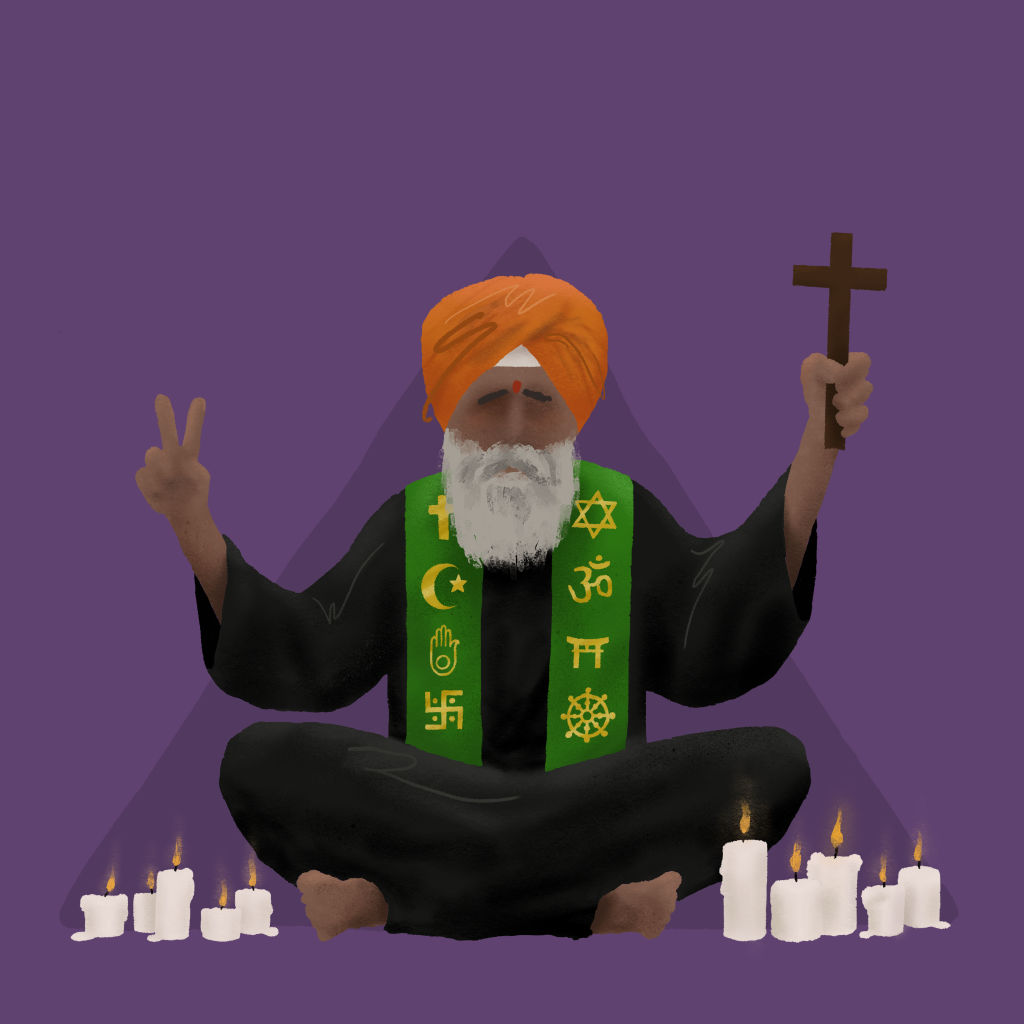
 Apple Podcasts
Apple Podcasts
 Spotify
Spotify
 Google Podcasts
Google Podcasts
 Other
Other